#women in the nineteenth century
Text


But if you ask me what offices they may fill, I reply—any. I do not care what case you put; let them be sea-captains, if you will. I do not doubt there are women well fitted for such an office... I think women need, especially at this juncture, a much greater range of occupation than they have, to rouse their latent powers. In families that I know, some little girls like to saw wood, others to use carpenters’ tools. Where these tastes are indulged, cheerfulness and good-humor are promoted. Where they are forbidden, because “such things are not proper for girls,” they grow sullen and mischievous.
—Margaret Fuller, Women in the Nineteenth Century (1845)
[Robert Scott Horton]
#quotes#Margaret Fuller#Robert Scott Horton#women#women's rights#history#women's history#women in the nineteenth century
4 notes
·
View notes
Text

Harriet Randall Lumis (American, 1870-1953): Summer Morning (via Bonhams)
#Harriet Randall Lumis#women artists#women painters#art#painting#nineteenth century#twentieth century#gardens#american painters
1K notes
·
View notes
Text

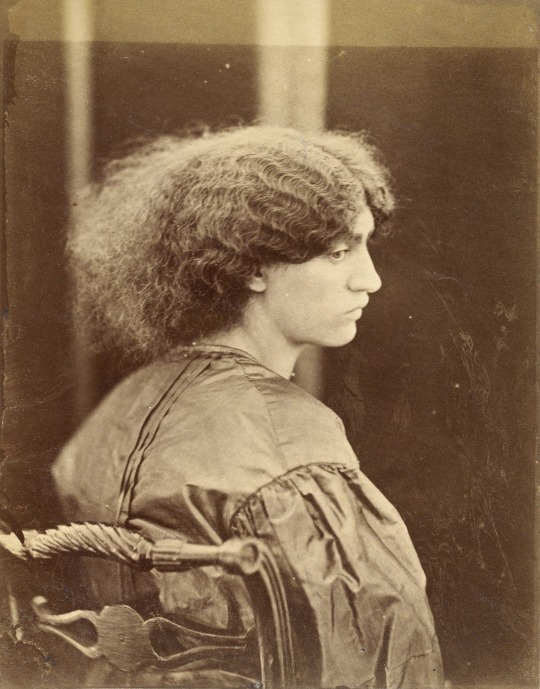
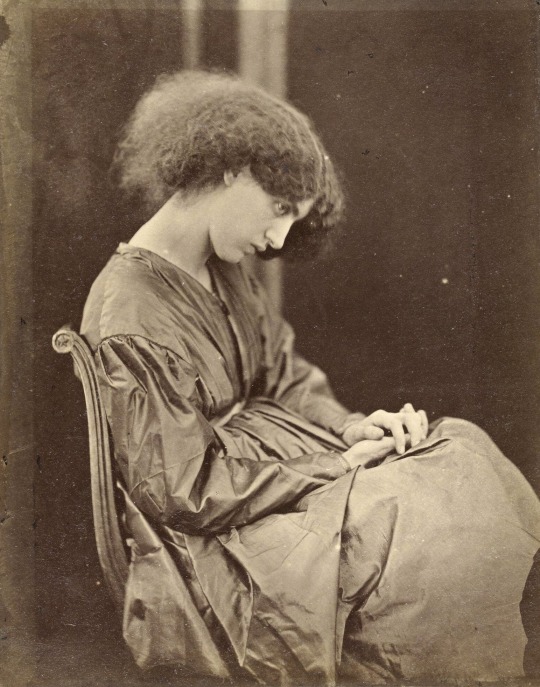
"Jane Morris, posed by [Dante Gabriel] Rossetti"
Photographed by John R. Parsons, 1865, London.
#jane morris#1860s#old photos#women#mine#dante gabriel rossetti#london#19th century#victorian#pre raphaelite#pre raphaelism#art#antique#victorian era#nineteenth century#victorian photography#19th century photography#history#photography#early photography#old photography#vintage#london england
150 notes
·
View notes
Text

Excerpt of Jane Eyre (1847) by English novelist Charlotte Brontë (1816–1855)
#quotes#jane eyre#charlotte bronte#bronte sisters#victorian literature#women in literature#women writers#1840s#nineteenth century#literature#english literature#classic literature
15 notes
·
View notes
Photo









Lincoln’s Women • SARAH LINCOLN GRIGSBY
“[Sarah] was a woman of extraordinary mind. Her good-humored laugh I can hear now, is as fresh in my mind as if it were yesterday. She could, like her brother, meet & greet a person with the kindest greeting in the world, make you easy at the touch of a word, an intellectual and intelligent woman.” Nathaniel Grigsby • “They [Sarah and Abraham] were close companions and were a great deal alike in temperament.” J.W. Lamar, a neighbor
Sarah Lincoln was born on February 10, 1807 in Elizabethtown, Kentucky. She was joined by a baby brother, Abraham, two years later. Though their family was extremely poor and lived in a single-room log cabin, the Lincoln children did sporadically attend school. Sarah’s mother Nancy, who was remembered an intelligent and deeply religious woman, ensured that both of them were literate. She also taught her daughter essential homemaking skills such as spinning wool and open-hearth cooking. Friends and neighbors considered Sarah a bright, industrious, very sweet girl. But when Nancy Lincoln fell ill and died, eleven-year-old Sarah was left to assume her many responsibilities as mistress of the house. She struggled to keep herself and her little brother fed and clothed until her father remarried in 1819.
Despite the family’s emotional and economic hardship, Sarah always remained cheerful and kind. She was very close to her brother Abraham. She was “short...and somewhat plump” in sharp contrast to his famously tall, gangly frame, but they shared the same dark hair, grey eyes, and warm laugh. In the late summer of 1826, Sarah married Aaron Grigsby and moved into a cabin a few miles from her family’s home. She became pregnant the following year, but suffered serious complications upon going into labor. A doctor and midwives were summoned too late to save her. Sarah died on January 20, 1828, a few weeks shy of her twenty-first birthday. She was buried cradling her stillborn son in her arms. The death of his beloved sister—a girl whose personality and intellect were so similar to his own and who had been his closest friend and often a surrogate mother—left Abraham, just eighteen, despondent.
#sarah lincoln#sarah lincoln grigsby#abraham lincoln#american history#historyedit#women in history#women's history#historicwomendaily#nineteenth century#*lincolnwomen#it's her birthday and then his birthday!#there is SO little info on her it's so sad :(#like 'oh yeah right lincoln had a sister or smth'#stillbirth cw#pregnancy cw
71 notes
·
View notes
Text


#not the madonna/whore complex......#don't get me wrong i'm thoroughly enjoying this book (obviously! it's great!)#but then some things remind me that it was written in the nineteenth century by tolstoj#(not exactly someone who drank his Women's Rights juice)#and i get a whiplash like few others#idk it's like when you've been reading a great classic and you're loving it#but then some deeply sexist or antisemitic stuff just comes out of nowhere#and you've brutally reminded of how things were unfair back then#(i mean they STILL are but at least on some level we have made some progress...)#and this one is not even that hard of a slap in the face! i mean. some men still think like that lmao#val reads w&p#val speaks#txt
3 notes
·
View notes
Text
i told sofia all about what i imagine happening at the end of the geto drabble from yesterday but i had no intention of actually writing it... but i want u guys to know too so we can talk about it :///
#she told me i gave her blue ovaries#which was funny but also sounds like something women would be diagnosed with in the nineteenth century and prescribed rest cure for
7 notes
·
View notes
Text
they cut off my tags on that thoreau post. i wrote like much more of a rant and tumblr didnt even tell me they were cuttin it before i pressed post
#listen. i would've been more concise if you made me#tales from diana#i get so passionate on the topic of pre-nineteenth-century female writers and their systemic exclusion from the literary canon#it drives me up a wall i could truly talk forever and ever about all of these misconceptions#lately the one that gets under my skin is 'look at these (well-remembered) female writers who wrote under a pen name'#my god especially if it's a MALE (or gender-neutral) pen name#first of all. the brontes did not have 'male' pen names. the gender of the bells was not known or presumed#but the assumption is that these ppl were trying to hide their gender rather than many ppl chose not to disclose their identity#bc they didnt want their identity to be known.#also many many many women chose unambiguously feminine pen names. ephelia or astrea or laura or lesbia#(yes very often aping latin/classical conventions)#or what jane austen published her work under initially? A Lady#that's not someone trying to avoid being judged as a woman but someone trying not to be known personally in the world. understandably#and many many early novelists were women. the novel was not a respected art form AT ALL in its early years#so it wasn't that controversial that many of the biggest novelists were women.#as the novel grew in perceived sophistication and respectability. the feminine aspect of its identity waned away slowly#and now the generations of aphra behns and eliza haywoods and fanny burneys and ann radcliffes are forgotten entirely#bc no one cared to preserve it!! THAT is the part of the systemic misogyny#not that zero women ever wrote or published anything. far from it#but it took a considerable amount of resourcefulness and/or privilege to achieve that in the first place#and even with that being accomplished. people did not value it enough to preserve it for future generations#we would not have shakespeare like we do without the first folio. that's a very significant historical fact in his legacy.#we'd have maybe a dozen or so plays. not 38.#but even today you do not go into a bookstore and find the complete works (or even plays) of aphra behn anywhere.#or susanna centlivre or mary pix or hannah cowley#how many people do you know who recognize those names? let alone how many people do you know who have READ their works?#very few. and they are not easy to fucking find anywhere either!#and often unless they've been selected in a series like oxford's world classics (god bless oxford's world classics btw!!!)#you won't find them except from very select sellers and often very expensively#many such early women novelists and playwrights have works so rare you cannot find them duplicated on public access sources
6 notes
·
View notes
Text


thinking about this parallel
10 notes
·
View notes
Text
"Our Generation": Gender, Regeneration and Women in Rock
The rock revolution was often connected with male performers and masculine energy; as critics of gender and rock have noted, “rock’n’roll in excelsis… [is] male ferocity, resentment, [and] virulence” …as rock was the aesthetic of masculine energy in the 1960s, the French Revolution expressed its aesthetic energy in Romanticism, which dominated art, literature, and music of the eighteenth…

View On WordPress
#90s#90s music#Alanis Morrisette#eighteenth century#Indigo Girls#Lilith Fair#Literature#Mary Wollstonecraft#Music#Natalie Merchant#nineteenth century#Poetry#Romanticism#Romanticism and Women#women in rock#Women in Rock Women in Romanticism#Women in Romanticism
15 notes
·
View notes
Text
I would like to talk for a few moments about my enduring and all consuming love for Mary Shelley.
Today would have been Mary's (because we would be on first name terms) 226th birthday. It has been designated 'Frankenstein Day' after her most well known and influential work.
The influence of Frankenstein cannot be overstated. Without it the horror and sci fi genres would not look the same as they do now. The fact that she started the book as something to do while she was on holiday and the weather was terrible is fascinating to me. We were so close to not having this book. She came up with these ground breaking ideas and executed them so beautifully because she was bored. She was eighteen when she did this. I can barely fathom this.
Mary's personal life was no less intriguing than her writing. She was raised by learned and free thinking parents. Her mother was Mary Wollstonecraft, one of the earliest feminist writers. She died, tragically as so many women did in the late eighteenth century, giving birth to her and Mary was raised by her father and his second wife. Her father always surrounded himself with the most brilliant minds of the day and Mary absorbed their ideas.
Her marriage to Percy Bysse Shelley is well documented. She was his second wife, his first wife, Harriet, having taken her own life, possibly as a response to Percy's affair with Mary. Their relationship was passionate and tempestuous, but their love and devotion to each other was genuine. When Percy died, in a sailing accident off the coast of Italy, Mary apparently kept his heart wrapped in a silk scarf for the rest of her life.
She also apparently learned to write her own name by tracing it on her mother's grave.
However goth you are, you will never be as goth as Mary Shelley.
Mary continued to write after her husband's death, keeping herself and her children comfortable. Her other words often dealt with strikingly modern sci Fi themes, such as The Last Man about a man who thinks he is the only one left after a pandemic. She also wrote historical novels, including one about Perkins Warbeck, who claimed to be one of the Princes in the tower to usurp the throne from Henry VII.
She died in 1851 at the age of 53. I cannot imagine what my life would have been without her.

#mary shelley#frankenstein#gothic literature#gothic fiction#nineteenth century fiction#nineteenth century literature#fiction by women#classics#classic literature#horror fiction#gothic horror#sci fi
6 notes
·
View notes
Quote
But, as in all things, it was not so easy for the lesbians. Lesbians were still characterized as inversions, largely because male sexologists were the norm, and they struggled with seeing women not as a separate species from men but as another human being. Those who were in relationships as lesbians were subdivided by these sexologists into “active” and “passive.” The “active” lesbian was the one who took on a more masculine role, who was dubbed the aggressor on the passive receiver of homosexual force. The passive lesbian did not so much give up her gendered role but rather subsumed it into a new role with a masculinized female partner. At the time, lesbians were even referred to as having “female husbands.” Medical professionals at the time also believed that lesbianism was tied to the larger movement for women’s rights, particularly the suffrage movement in the United States. Apparently, lesbianism leads to voting.
In Transit: Being Non-Binary in a World of Dichotomies, by Dianna E. Anderson
#in transit#dianna e anderson#lesbian#inversion theory#nineteenth century gender roles#voting#women's suffrage#queer history#queer
3 notes
·
View notes
Text

Bertha Wegmann (Danish, 1847-1926): Portrait of a young woman (via Lempertz)
#Bertha Wegmann#women artists#women painters#art#painting#nineteenth century#twentieth century#portrait#danish painters
678 notes
·
View notes
Text

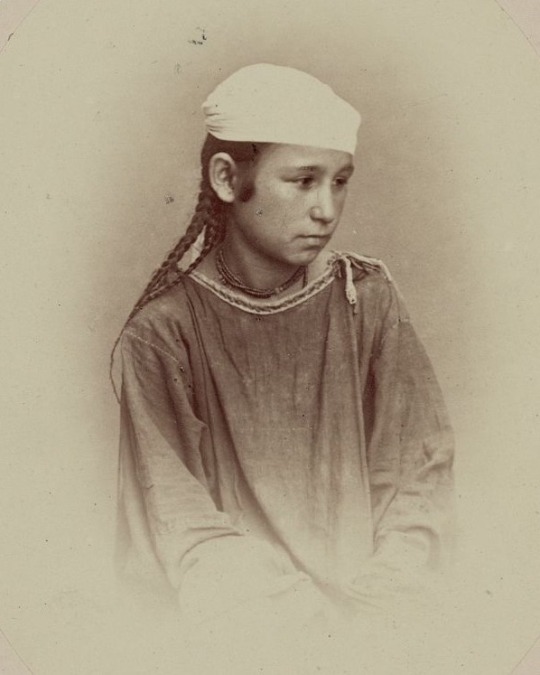
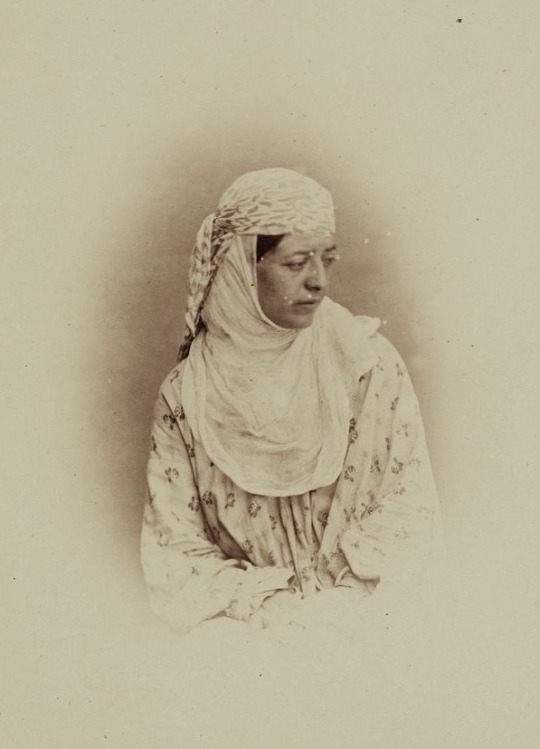






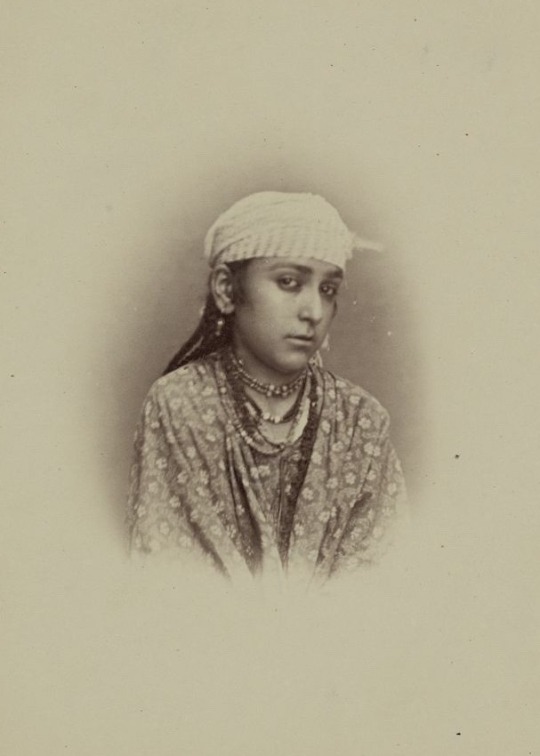
Jewish women of Turkestan Krai, Central Asia.
Anonymous photographer, c. 1865-1872.
#jewish#1860s#1870s#old photos#women#mine#jewish history#early photography#19th century#antique#jewish tradition#old photography#jewish women#historic photographs#antique photo#women in history#nineteenth century#vintage style#jewish tumblr#jews of tumblr#vintage#historical photos#jewblr#women in photography#vintage photography#old photo#photography#vintage women
105 notes
·
View notes
Video
Godey' Lady's Book Spring 1884 Fashion Plate by clotho98
Via Flickr:
Godey's Lady's Book Fashion Plate from one of the 1884 Spring issues. It fell out of a bound copy of the 1884 issues, so I'm not sure which month it is for yet . It looks to be late-Spring, early-Summer.
#Nineteenth Century#19th#Century Ephemera Illustration Vintage Engraving Fashion Plate Godey's Lady's#Book 1800s Victorian Magazine Women Bustle 19th#century Les#Modes#Parisiennes#flickr
0 notes
Text
Rosa Bonheur (FR, 1822- 1899)
Rosa Bonheur, born Marie-Rosalie Bonheur (16 Mar 1822 – 25 May 1899),
was a French artist, mostly a painter of animals (animalière) but also a sculptor, in a realist style.
Her best-known paintings are Ploughing in the Nivernais, first exhibited at the Paris Salon of 1848, and now at the Musée d’Orsay in Paris, and The Horse Fair (in French: Le marché aux chevaux), which was exhibited at the…

View On WordPress
#animalière#art by women#Bonheur#famous female painter#french artist#Lemarchéauxchevaux#Marie Rosalie Bonheur#nineteenth century#painter of animals#PalianSHOW#realism#realist style#Rosa Bonheur#sculptor#The Horse Fair#Women&039;s Art
0 notes
